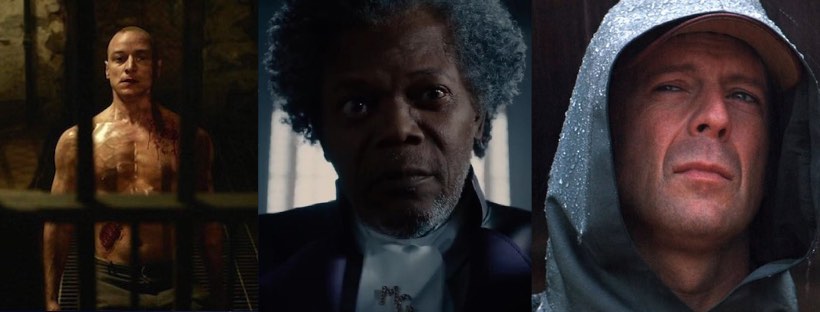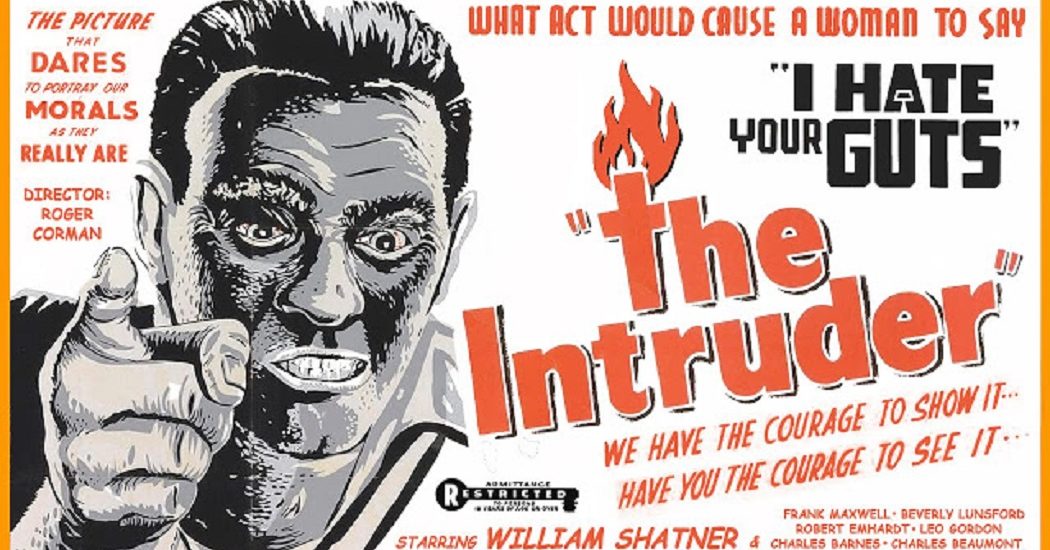
Cinema Fearité presents The Intruder
Man is the Monster in Roger Corman's The Intruder.
When the name of writer/director/producer Roger Corman comes up, it is usually regarding B-movies with titles like A Bucket of Blood, Bloody Mama, and The Masque of the Red Death. But in 1962, right in the middle of his Corman-Poe cycle, he made what may be the most important film of his career – the socially conscious The Intruder.
The Intruder is set in a small southern town called Craxton whose high school has just been desegregated by a court order. The day before the African American students are scheduled to join their white counterparts at the school, a man named Adam Cramer (William Shatner from Visiting Hours and The Babysitter) shows up claiming to be from an organization called the Patrick Henry Society.
Cramer whips the white townspeople into a frenzy with the intent of stopping the integration. With varying degrees of success, Cramer persuades the men and seduces the women of the town into agreeing with him. His tactics start as simple conversations and rallies, but soon turn into cross burnings and church bombings. As the violence escalates, the town becomes more and more divided, until the situation turns into a powder keg ready to explode.
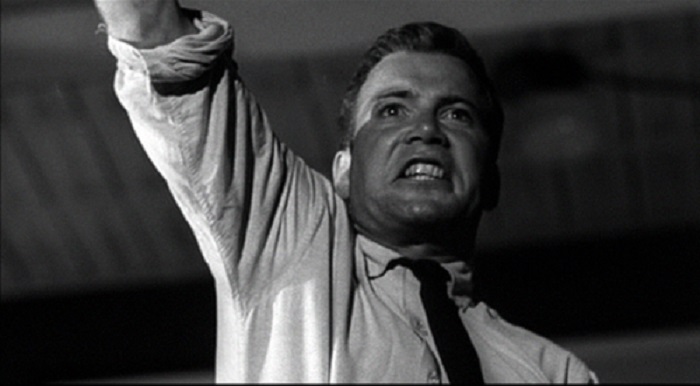
The Intruder is often said to be akin to a less-subtle episode of “The Twilight Zone,” and the comparison makes sense, as the screenplay was adapted by frequent “The Twilight Zone” writer Charles Beaumont from his own 1959 novel. It’s a much more serious and realistic movie than the rest of Roger Corman’s exploitative and schlocky catalog.
The title itself has a double meaning. Literally, Adam Cramer is the Intruder, a non-Southern man who shows up in town to stir up trouble. Symbolically, the African American students are collectively the Intruder, boldly going where they have never been. The Intruder is easily Roger Corman’s most socially relevant movie, and it wears that badge unashamedly.
While that social relevance was shockingly timely in the early sixties era in which The Intruder was made, it’s just as applicable to today’s political climate of alt-right Nazi racism and closed border xenophobia. And even though The Intruder might be Roger Corman’s most important movie, it’s also his least commercially successful.
Corman fans had come to expect schlock like The Wasp Woman and Attack of the Crab Monsters whenever the low budget mogul’s name was attached, so when he released a serious political movie, they weren’t as interested. In order to try and milk some additional revenue out of the film, Corman also released it under the titles Shame, The Stranger, and even the more exploitational I Hate Your Guts!, but The Intruder still reportedly remains the only film of the producer’s that has failed to turn a profit.
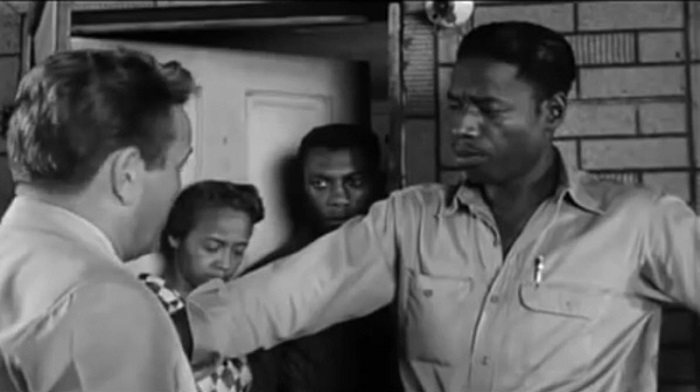
While it’s easy to blame The Intruder’s lack of box office take on its political commentary, Corman has been said to point the finger somewhere else – at William Shatner. And he has a point; Shatner isn’t entirely convincing as a racist antagonist, and the entire film suffers for it. Shatner seems to be skirting the line between being charming and being evil, so the viewer doesn’t quite know how to feel about him. His ideals are obviously wrong, but he’s not a fire-and-brimstone villain. Shatner’s performance in The Intruder falls in between his memorable stints on “The Twilight Zone” and his career defining role on “Star Trek,” so it’s not quite the melodramatic Shatner that pop culture fans know and love. And his attempts at subtlety in The Intruder are often confused with trying to be sympathetic.
The Intruder is an uncomfortable watch, even by today’s standards. It’s quite an indictment of the rabble-rousing, groupthink mentality that is present whenever political discussion hits a fever pitch. At first, the townspeople are all fine with accepting desegregation, since it’s the law and they all simply want to be good citizens. It’s only when Adam Cramer shows up spitting his hateful rhetoric that the citizens let their true colors show. Some are allies to the black kids, but others turn vile when they anonymously join the mob (and the Klan). The Intruder contains a lot of triggers, both visual and verbal, so sensitive viewers should be warned.
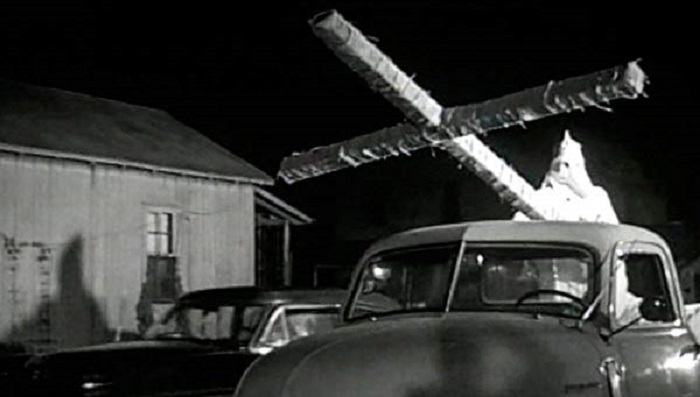
From a technical filmmaking standpoint, The Intruder is one of Roger Corman’s more straightforward efforts. There is some stunt work and a few pyrotechnical effects (we mentioned the burning crosses and exploding churches), but no monsters or gore. The film was shot very matter-of-factly, almost like a television movie, by cinematographer Taylor Byars (The Cat Burglar, Teenage Monster), and composer Herman Stein (The Monolith Monsters, The Mole People) contributed a rhythmically pounding, almost militant score. It’s as clean looking and sounding of a movie as Corman’s made. It’s the ideology behind it that’s grimy.
Of course, everyone knows that Roger Corman would go back to producing the B-movie schlock that made him famous. And The Intruder is, while not impossible, one of his more difficult films to come by. But everyone should see it, for two reasons. First, it’s an ominous history lesson that we as Americans seemed doomed to repeat, and second, it’s Corman without his usual cinematic smirk. The only monster in The Intruder is man himself.
